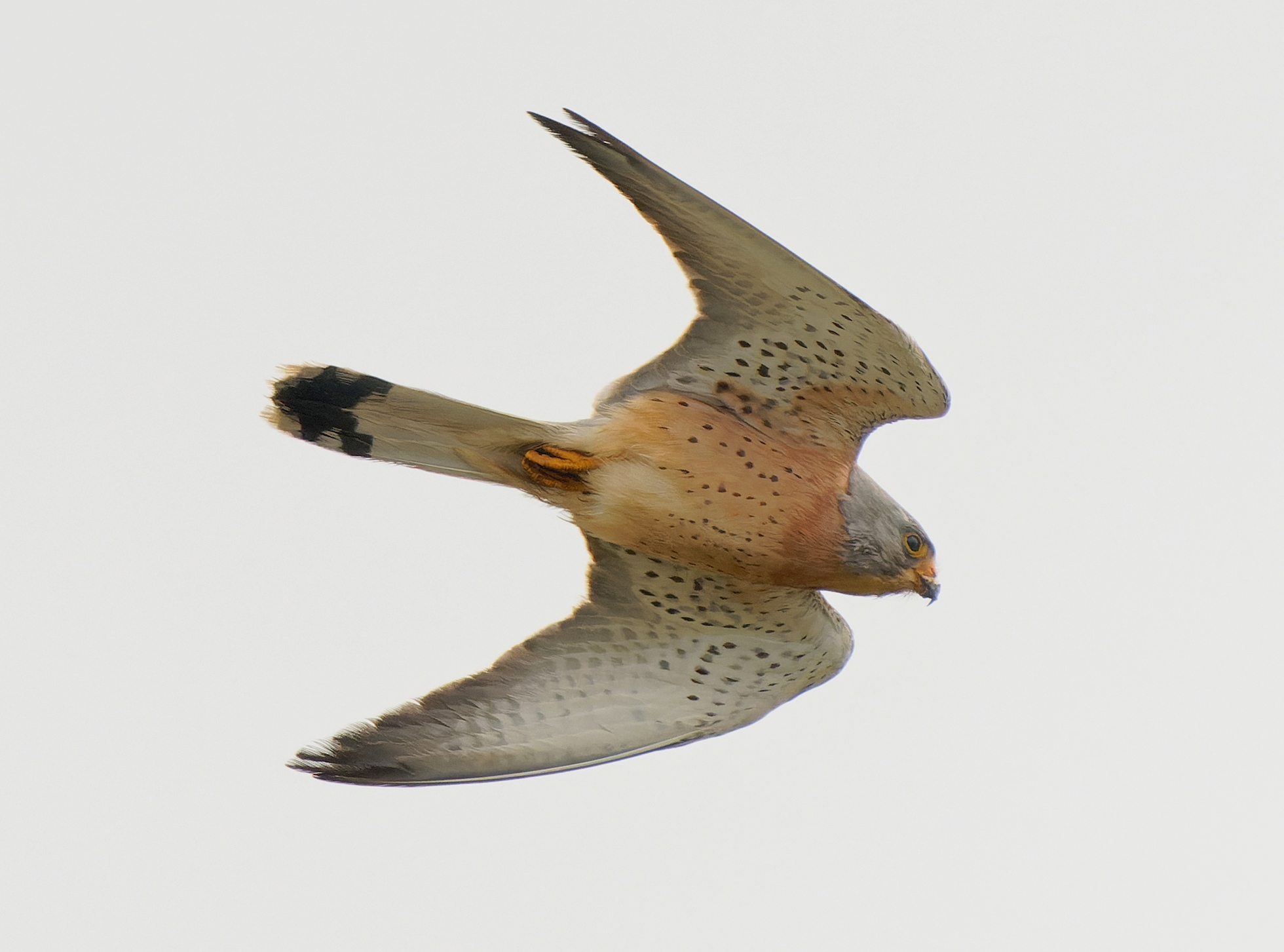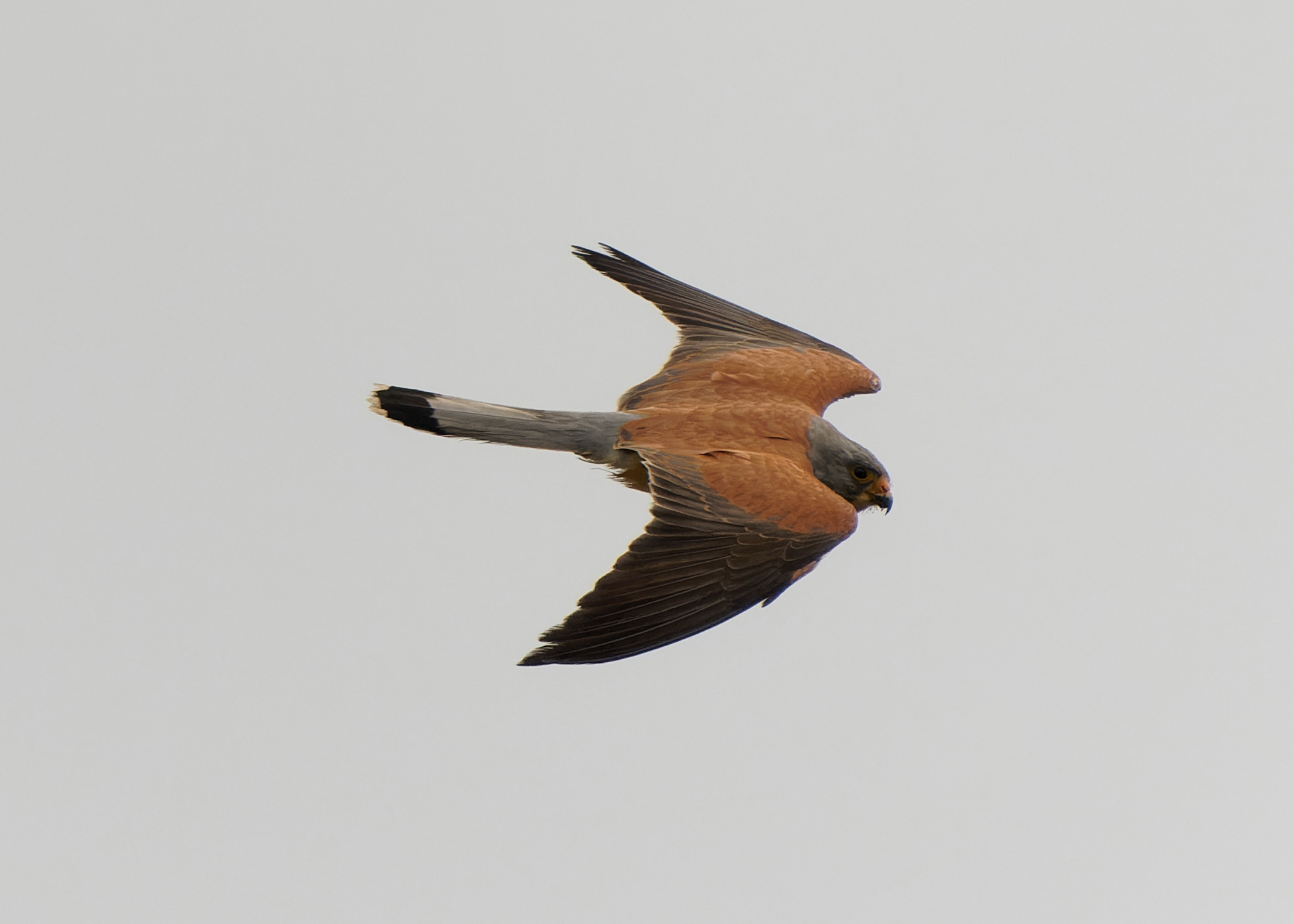It had been a quiet winter in the Isles of Scilly. The only notable new birds were a first-winter Richard's Pipit on 12 February, which I chanced upon on the airfield, and an adult Long-tailed Skua on 18 February, found resting track-side at Deep Point by Richie Aston. However, as early spring approached, a fresh enthusiasm powered up Scilly birders. Despite a lack of common migrants, Steve Holloway teased out an Alpine Swift on 19 March and I had a Purple Heron two days later.
On 23 March, in battering winds, I wandered across the golf course. My intent was to dig out Scilly's first Northern Wheatear of 2023, or perhaps something scarcer like a Ring Ouzel or a Hoopoe. I scoured the fairways. Still no wheatear – just first- and second-winter Yellow-legged Gulls. I am no gull lover, so paid little attention to the 'yellow-leggers' (slang taken from Will Scott's 'rapoetry'). I headed toward the clubhouse, where things were about to get very interesting …

The warm underparts, clean white underwings and lack of dark moustachial stripe all pointed towards male Lesser Kestrel (Ashley Fisher).
At 11.10 am, a kestrel rose up from the coastal path below the clubhouse. It hung in the wind and was essentially silhouetted against a grey sky, but I noticed that the breast to thighs were rufous in colour. Birders talk about 'alarm bells ringing' when a bird is 'not right'. For me, it wasn't so much alarm bells ringing, as horns hooting, sirens signalling, and claxons blasting.
The underside feature was the same as a kestrel that I found perched atop a flag post on the golf course in spring 2002. That was Scilly's first modern-day Lesser Kestrel: a first-summer male. I told myself that lightning never strikes the same place twice … I then remembered that on Scilly it does. My close birding buddy, Ashley Fisher, astonishingly found Britain's first and second Great Blue Herons at Lower Moors, through exactly the same hide slat.
Back to the present and the kestrel had stooped to the ground, then rose up high against the sky, before dropping lower against a landscape background. Holy moly, it was a male, and the wing-coverts, scapulars, mantle, and back appeared to be foxy coloured. Again, the kestrel stooped down and rose up, repeating this action five times in quick succession, each time permitting brief but revealing views, enabling a bit-by-bit identification. It was a diminutive kestrel. The head appeared to be deep blue-grey. The central tail feathers protruded beyond the tail-end. I looked unsuccessfully for the adult's blue-grey wing panel. I failed to see the underwings clearly. Then, as quick as a flash, it was gone.
The event happened all too quickly. I was momentarily stunned. Everything added up to a male Lesser Kestrel. Had I actually seen those colours, though? Was the kestrel really that small? 'Well, yes, I reckon so,' I thought.
I gathered myself together and switched into action mode. I posted a message for locals on Chris Langsdon's WhatsApp group: 'probable 1S male Lesser Kestrel' (probable, because the event was so brief; first-summer, because apparently it lacked a blue-grey wing panel). I rang Ash who raced up to the golf course. I sent a personalised message to Higgo (aka John Higginson) who replied: "Sounds like '02 over again."

Although the blue-grey panel on the upperwing was quite subdued in this individual, all other features pointed to it being an adult (Ashley Fisher).
As with many rare bird finds, the kestrel disappeared without a trace. To make matters worse, the threatened rain set in. Ash went back to work and I sat in my car at the golf course car park with windscreen wipers on. I watched the skyline where the kestrel had been and waited, waited and waited, but the rain persisted.
I thought through what I had and hadn't seen. I hadn't seen a blue-grey upperwing panel, but I remembered that the blue-grey upperwing panel on Scilly's 2020 adult male Lesser Kestrel, which Ash found, was barely visible in the field. However, I had seen the tail fanned but hadn't noted barred outer tail feathers, which I now recalled were quite obvious on the 2002 first-summer male Lesser Kestrel. Perhaps the bird was an adult? I mentioned this to Ash.
The rain petered out at about 2.30 pm. Ash and I chatted by mobile. The 2002 bird commuted between the golf course and Peninnis Head. So, the only logical refind strategy was for me to stay at the golf course and for Ash, who by now had finished work, to check Peninnis. Most other Scilly birders were at work.
I reached Carn Morval, at the north-west extreme of the golf course, and was scanning ledges on the carn where the 2002 bird rested. My mobile rang. Ash had seen a kestrel and was in pursuit. I headed back to the car in strong belief that Ash would soon ring back with positive news. My mobile rang, I answered, and all I could hear was Ash's hoops of joy.
The Lesser Kestrel was near the millstone, along King Edward's Road, a track out to Peninnis Headland. At that moment, Scott Reid arrived at the golf course by car and in moments we were both burning rubber en route to Peninnis. News spread and other folks raced toward Peninnis. Scott and I parked up and hurried along King Edward's Road, soon joined by the ever-jammy Will Wagstaff, back only one day from Antarctica. We turned the corner and there was Ash, bins fixed on that 'oh so beautiful' bird.
Details for ageing remained elusive on the flying bird. There was some suspicion that one or two of the outer tail feathers had barring and uncertainty about the presence or not of blue-grey upperwing panels. Scott took some photos, and these confirmed a full set of adult tail feathers, no barring in the upperwing, and greyish upperwing greater coverts tipped rufous, forming a rather subdued wing panel (it varies in adults from subdued to bright). It was an adult. The head lacked dark moustachial stripes. The rufous underside was lightly dotted with dark spots. In the pearly white underwings, the primaries had light barring, most typical of first-summer birds, but the upperwing plumage confirmed age as adult. Further forensics found whitish claws.
Revellers started to arrive. Bird photographer Martin Goodey raced to Peninnis on his quad bike. Julian Branscombe and his team from Scilly Wildlife Trust arrived, headed by Lucy McRobert. Higgo slipped out of work and up to Peninnis. Even Big Al (Alan Hannington) waddled his way from Hugh Town. Will Scott was jumping with joy at a life tick. All bar a few local birders were present. Perhaps the only visiting birder on St Mary's, Jonnie Fisk, stood tall and grinning. The atmosphere was electric. It was classic out-of-season Scilly.

Lesser Kestrel, St Mary's, Isles of Scilly (Ashley Fisher).



